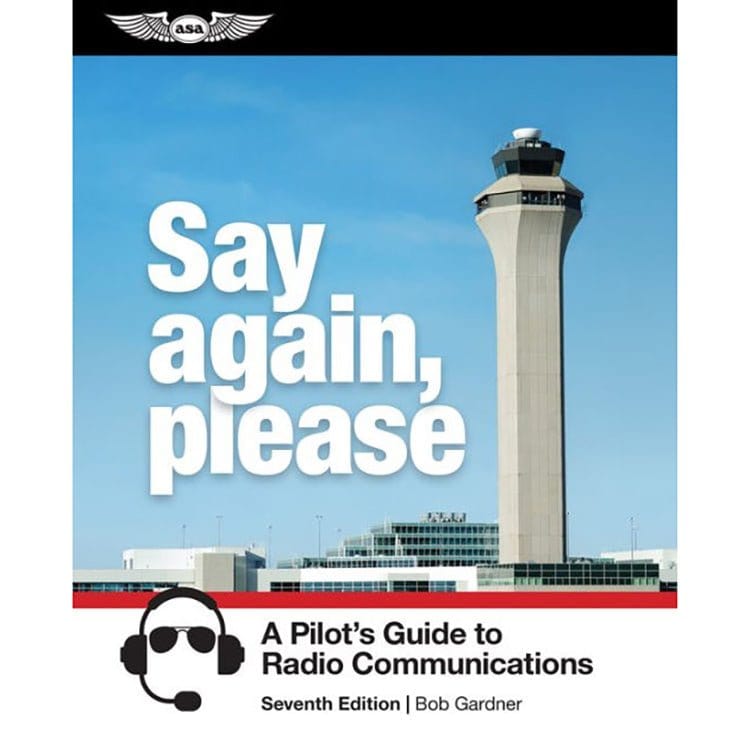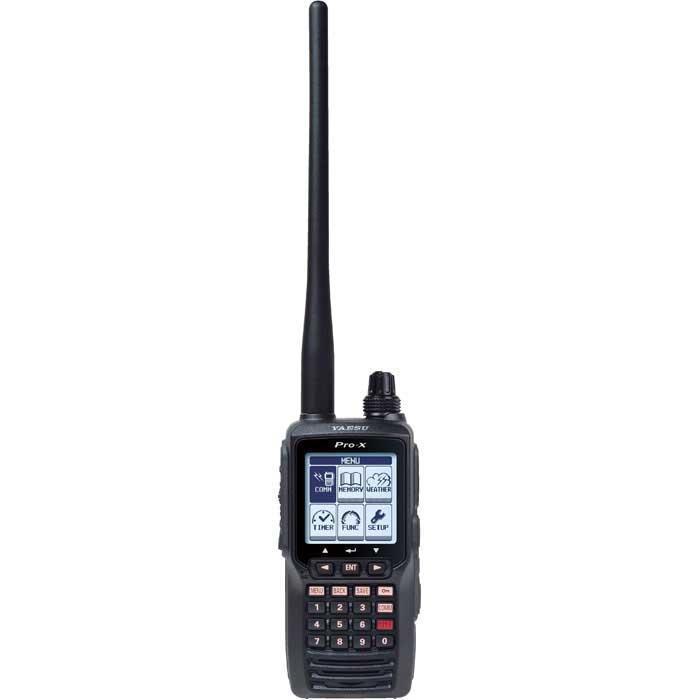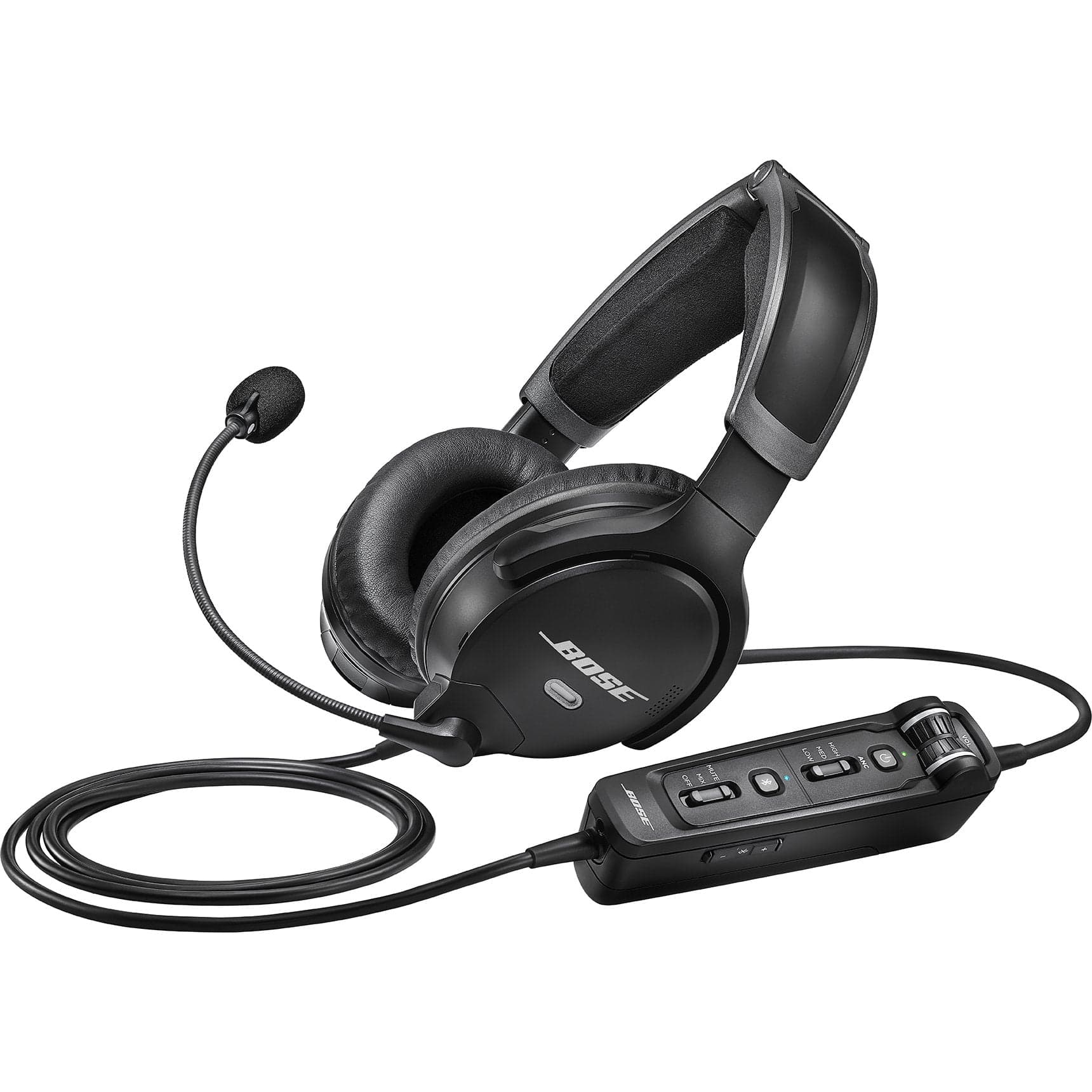We updated this article to refresh to 2023 standards. Communication is one of those core fundamentals of becoming a pilot. It may seem daunting at first, but just like riding a bike, once you get it, you get it. This article is for reference purposes. As a pilot, you should always check that you have the latest information before flight.
Table of Contents
- Types of Aviation Radio Signals
- Low Frequency (LF)
- Medium Frequency (MF)
- High Frequency (HF)
- Very High Frequency (VHF)
- Communication vs Navigation.
- Most Common Aviation Frequencies and Allocations.
- Helpful Hints.
It is no secret that new pilots are often more than a little nervous and hesitant about getting on the radio. They worry about not remembering what to say and how to say it when they finally key up the mic, but even if you get those variables right, it still does you no good if you are not on the correct frequency. That is why an important hurdle of using your radio is understanding and learning common aviation frequencies.

You have your aircraft’s main radio and a handheld radio as a backup. You have reviewed your ATC communication skills and studied your copy of ASA Say Again, Please: Guide to Radio Communications. You are all ready to turn that radio on and get cleared for takeoff. There is just one problem – what frequency are you supposed to be on?
While no one expects pilots to memorize all the aviation frequencies, it is certainly helpful to know the most common ones and how the frequencies are laid out within the bands. A high-level understanding of the types of aviation radio signals your aircraft can receive will also go a long way towards developing your knowledge on the topic.

Types of Aviation Radio Signals
Aviation radio frequencies are found in the low frequency (LF), medium frequency (MF), high frequency (HF), and very high frequency (VHF) bands. These frequencies may be used for voice communications or for navigation.
Low Frequency (LF)
Historically, when aviation radio was first starting out, most air navigation transmissions took place on the low frequency band from 200 KHz to 415 KHz. As reliable higher frequency systems were developed, most of the low frequency air nav beacons were shut down. Today, some low frequency beacons remain and are used for instrument landings. Others were kept operational as backups in case of primary navigation system failures. Low frequency is useful even when other forms of communication fail because its long wavelengths are less affected by terrain and it can bounce off the ionosphere to travel long distances around the world.
Medium Frequency (MF)
Aviation radio is allocated a small portion of the medium frequency spectrum in a band from 2850 to 3000 KHz. Most planes have radio direction finders onboard that get a bearing by focusing in on a medium frequency transmission.
High Frequency (HF)
In the past, high frequency bands were typically used for domestic voice communications. That traffic has since shifted to the very high frequency (VHF) band. High frequency continues to be used for voice communications for international flights, however, as it can travel a longer distance than VHF.
Very High Frequency (VHF)
Frequencies in the very high frequency band are most widely used for domestic aircraft communications at the present time. Both communication and VOR navigational systems are operated on VHF frequencies.
To support full VHF communications, the FAA recommends that all aircraft with older 360-channel systems should be retrofitted with a 760-channel piece of equipment with 25 kHz channel spacing which is capable of operating in the 118.000 to 136.975 MHz band.
Communication vs Navigation
Signals that are transmitted and received via aviation radio can be of more than one type. In addition to communication (COM) signals, aviation radios are also used for navigation (NAV). Some radios are only capable of COM, while others are dedicated for NAV, and a third variety is configured to be used for both COM and NAV. Some VHF Omnirange (VOR) navigation stations and aircraft navigation beacons transmit voice communications in addition to their navigation functions.
Most Common Aviation Frequencies and Allocations
The Federal Communications Commission (FCC) is an agency that regulates communications including radio in the United States. One of its roles is to allocate all radio bandwidths and frequencies. In the United States, VHF civil aircraft communications are placed in the 100 MHz band and allocated 760 channels within the range from 118.0-136.975 MHz. As a pilot, every frequency you talk on will fall within this range. VOR navigational frequencies are allocated to the range from 108.0 to 117.975 MHz, positioning them just below the communications range.
VHF communications channels usually have 25 KHz of spacing between them, except for flight test stations which are spaced by just 8.33 kHz and the emergency frequency of 121.5 MHz which has 100 kHz of protection around it. The full allocation list covering all 760 channels in the VHF aviation band is posted in FAA advisory circular 90-50D.
While the full allocation listing is interesting to review, from an everyday use perspective it is most helpful to start out with learning the frequency ranges for each type of VHF signal as well as the specific frequencies that you are most likely to use on a regular basis.
The VHF frequency ranges used for aviation are:
|
Frequency |
Allocation |
|
108.000 – 112.000 MHz |
Aviation Terminal VOR and ILS Navigation |
|
112.000 – 117.950 MHz |
Aviation VOR Navigation |
|
118.000 – 136.975 MHz |
Aviation Communication |

Within the VHF aviation communication frequency range, the most commonly used frequencies and their corresponding allocations include:
|
Frequency |
Allocation |
|
121.500 MHz |
Aviation Distress (VHF Guard) |
|
118.000 – 121.950 MHz |
Air Traffic Control (Towers and ARTCC’s) |
|
121.3 MHz |
Ground |
|
121.7 MHz |
Ground |
|
121.9 MHz |
Ground |
|
121.975 – 122.675 MHz |
FSS |
|
122.0 MHz |
En Route Flight Advisory Service (Flight Watch) |
|
122.2 MHz |
Universal FSS |
|
122.725 MHz |
Unicom (CTAF) |
|
122.725 MHz |
Unicom (CTAF) |
|
122.75 MHz |
Air-to-Air (GA fixed wing) |
|
122.800 MHz |
Unicom (CTAF) |
|
122.900 MHz |
Unicom (CTAF) |
|
122.950 MHz |
Unicom (CTAF) for controlled airports |
|
123.000 MHz |
Unicom (CTAF) |
|
123.025 MHz |
Air-to-Air (GA helicopters) |
|
123.050 MHz |
Unicom (CTAF) |
|
123.075 MHz |
Unicom (CTAF) |
|
123.3 MHz |
Air-to-Air (Gliders and hot air balloons) |
|
123.5 MHz |
Air-to-Air (Gliders and hot air balloons) |
Helpful Hints
Once you have learned the key frequencies, there are a few other helpful hints that can keep you out of trouble and make you sound like a seasoned professional on the air.
CTAF Frequencies
The Common Traffic Advisory Frequency (CTAF) or Unicom frequencies are typically used at nontowered airports. The most common are 122.7, 122.8, 122.9, 123.0. 123.050 MHz with 122.950 being the usual CTAF frequency of choice for airports with a tower.
Pilot-controlled lighting systems (PCL) are used at some smaller, non-towered airports. If you are making a night approach to landing at an airport with a PCL, in most cases, you will activate the system through your radio which is set to the appropriate CTAF frequency. Turn on the lights by keying your mic a specified number of times for the desired lighting intensity.
Ground Frequencies
The most common ground frequencies are 121.3, 121.7, 121.9. All ground frequencies start with 121 and have an odd tenth at the end. Familiarize yourself with the ground frequencies because the tower controller may simply tell you something like “contact ground on point 9" and expect you to know that the full frequency they are referring to is 121.9.
"Finger" and "Fingers"
Select frequencies have been set aside as flight test stations. These frequencies are available to aircraft manufacturers as they conduct test flights. Test flight frequencies are sprinkled throughout the VHF aviation band between 123.125 MHz and 123.575 MHz.
Within this range are 123.4 MHz and 123.45 MHz, colloquially referred to as “Finger” and “Fingers” respectively. In some circles, these frequencies have been used for casual air-to-air communications. This may not be a problem when flying over international waters where those frequencies are not officially designated for another purpose.
Once you start using them over the United States or its coastal waters, however, you could have a very big problem – potentially a $10,000 problem, to be precise. Since the FCC designated both of these frequencies to be used solely for test flight communications, any other use constitutes an illegal transmission, and pilots transmitting illegally could be fined up to $10,000 for each transmission or taken to small claims court for damages caused by interfering with the data transmission during a test flight.
Depending on your location, the likelihood of being prosecuted may not be very high, but it is important to know that the safe and correct course of action if you want to talk to another pilot is to use 122.75 MHz which is the designated air-to-air frequency for fixed wing aircraft. This will keep you out of trouble and show that you are well-versed in the correct aviation frequencies usage.
A great way to learn how to talk on the radio is with ASA Say Again Please. Pick up your copy today.
Want to learn more about communications and equipment?
Our guides are designed to help student pilots become professional pilots and for private pilots to brush up on their knowledge and skills.
-
Lost Comms on IFR Flight (What to do & Procedures to Follow)
-
Class A Airspace and How it Differs from All Other Categories of Airspace
-
IFR Clearance: How To Request & File (Examples / Requirements)
Did you find this article helpful?
Do you think we missed anything important? Let us know in the comments below!










5 comments
Kark Arkle
This might be accurate for the USA, but when travelling internationally other common frequencies apply. In addition, some hang-gliders and para-gliders use frequencies between 140.000 and 143.9875 MHz (mostly between 143.700 and 143.950 MHz), sometimes with permission and sometimes illegally. And did you know that the word illegally has 4 ’l’s in it? How’s that then?
Logictheorist
Andrea,
123.4 to 5 is air to air (and air to ground) and is often used by balloonists, parachutists, and drone pilots coordinating with each other. Glider pilots will use it as well when negotiating with each other around thermals and other lifting air.
Black hawk
Can someone explain why I’m hearing aircraft on 49.875mhz???!!
Bill
Why would they “crack down” if it’s not a problem? The FCC is complaint-driven, and they generally won’t do anything unless there’s an actual problem to be solved.
Andrea
Thank you for this helpful article. It’s interesting that in South Florida, 123.45 is used as a common traffic frequency for air-to-air communication within concentrated civilian and military training areas, such as the area south of Lake Okeechobee and west of Palm Beach for example. I wonder if the FAA or FCC will actually crack down on this practice, or if the constant use of these frequencies is simply “up to the locals”, after a certain point?